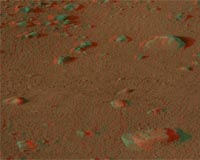 |
Toronto (UPI) May 7, 2010 An "omnifocus" video camera that answers every surveillance operator's prayer has been developed by researchers at the University of Toronto, the university said. The video camera, based on a new distance-mapping principle, is expected to have both defense and civilian industry applications, including medical sciences and coverage of news and television entertainment. The camera delivers automatic real-time focus of both near and far field images, simultaneously, in high resolution. "This unprecedented capability can be broadly applied in industry, including manufacturing, medicine, defense, security -- and for the consumer market," said the university. Analysts said the innovation could revolutionize imaging technologies increasingly deployed in the vast number of security appliances brought to the market since the Sept. 11, 2001, attacks on the United States. Security industries have been reporting a boom in profits amid rising demand for imaging products. Investment inflows into security industries have also increased and some estimated put the volume through 2009 to be in excess of $45 billion. Inventor and principal investigator of the omnifocus video camera, Professor Keigo Iizuka of the university's electrical and computer engineering department, explained that "the intensity of a point source decays with the inverse square of the distance of propagation. "This variation with distance has proven to be large enough to provide depth mapping with high resolution. What's more, by using two point sources at different locations, the distance of the object can be determined without the influence of its surface texture." That principle led Iizuka to invent a novel distance-mapping camera, the Divergence-ratio Axi-vision Camera, abbreviated "Divcam," which is a key component of the omnifocus video camera. The omnifocus video camera was produced in collaboration with consulting investigator David Wilkes, president of Wilkes Associates, a Canadian high-tech product development company. It contains an array of color video cameras, each focused at a different distance and an integrated Divcam. The Divcam maps distance information for every pixel in the scene in real time. A software-based pixel correspondence utility, using prior intellectual property invented by Wilkes, then uses the distance information to select individual pixels from the ensemble of outputs of the color video cameras and generates the final "omnifocused" single-video image. "The omni-focus video camera's unique ability to achieve simultaneous focus of all of the objects in a scene, near or far, multiple or single, without the usual physical movement of the camera's optics represents a true advancement that is further distinguished in terms of high-resolution, distance mapping, real-time operation, simplicity, compactness, lightweight portability and a projected low manufacturing cost," said Wilkes. The camera is still in the research phase but a university news release said "it's not difficult to imagine how far-reaching an impact the Omni-focus Video Camera could have on several industries." Citing the future direction of his research, Iizuka said the camera could replace television studio cameras. "Consider the example of a musical concert being televised by a major network. Even though the singer is in sharp focus, band members in the background are invariably out of focus," Iizuka said. "Conventional video cameras are unable to focus simultaneously on both the singer and band members in the background. "The omnifocus video camera removes this limitation to deliver higher-quality video images and improved quality of experience to potentially millions of TV viewers worldwide." He said the camera would also address key issues in medical applications of technology. "I'd like to apply the principle of the omnifocus video camera to the design of a laparoscope," he said. "It would help doctors at the operating table if they can see the entire view without touching optics of the laparoscope, especially if dealing with a large lesion."
Share This Article With Planet Earth
Related Links Space Technology News - Applications and Research
 James Cameron to shoot Mars in 3-D
James Cameron to shoot Mars in 3-DLos Angeles (AFP) April 29, 2010 After immersing movie-goers in the dazzling imaginary world of Pandora, "Avatar" director James Cameron is training his 3-D camera on a planet closer to home: Mars. The Pasadena Star News reported Thursday that the Oscar-winning filmmaker has persuaded NASA to install a high-resolution 3-D camera on the next generation Mars rover, Curiosity, due to launch in 2011. Cameron had lobbied NAS ... read more |
|
| The content herein, unless otherwise known to be public domain, are Copyright 1995-2010 - SpaceDaily. AFP and UPI Wire Stories are copyright Agence France-Presse and United Press International. ESA Portal Reports are copyright European Space Agency. All NASA sourced material is public domain. Additional copyrights may apply in whole or part to other bona fide parties. Advertising does not imply endorsement,agreement or approval of any opinions, statements or information provided by SpaceDaily on any Web page published or hosted by SpaceDaily. Privacy Statement |